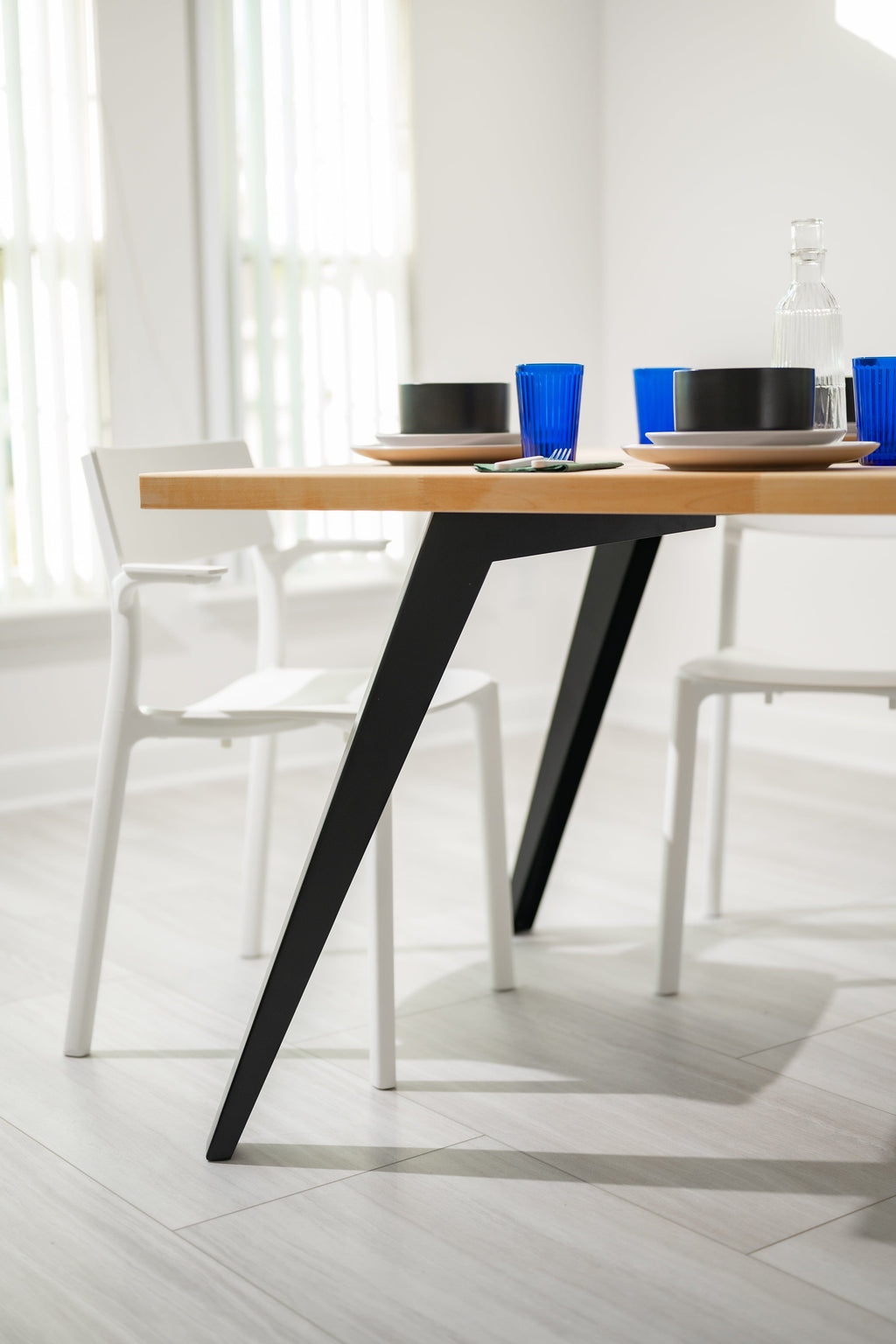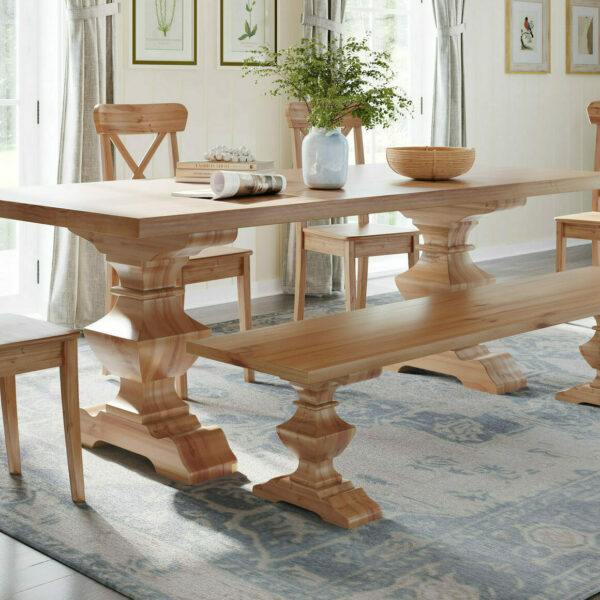The Best Materials for Durable and Elegant Dining Room Table Legs
The Best Materials for Durable and Elegant Dining Room Table Legs
Blog Article
From Traditional to Modern: Locate the Suitable Dining Area Table Legs for Your Design
The selection of dining-room table legs plays a pivotal function in specifying the total personality of your room, connecting the gap between typical workmanship and modern-day appearances. While classic layouts such as cabriole and transformed legs evoke a sense of ageless class, contemporary styles like hairpin and geometric options provide an opportunity for striking visual rate of interest. Assessing the ideal equilibrium between these designs requires a nuanced understanding of your existing decoration and personal preference. As you take into consideration these components, the concern continues to be: just how can you effortlessly incorporate these diverse leg designs to create an unified eating experience?
Understanding Table Leg Styles
The selection of dining-room table leg designs can substantially affect both the aesthetics and capability of the room. Each leg design contributes one-of-a-kind aesthetic aspects and sensible functions, catering to diverse layout preferences and usage demands. Comprehending these designs is critical for choosing the right table that straightens with your total indoor layout vision.
For example, tapered legs supply a tidy, timeless look that can boost a room's style, while pedestal bases give stability and make best use of legroom, making them excellent for smaller sized areas. Barrette legs, a hallmark of mid-century modern layout, present an industrial panache, permitting for an airy, open feel. Trestle legs evoke rustic appeal, supplying robust assistance and a sense of eternity.
In addition, the option of products plays a considerable duty. Wooden legs can bring heat and structure, whereas metal alternatives commonly share a smooth, modern ambiance. Eventually, recognizing table leg designs is necessary for creating a natural eating area that shows personal style while making certain functionality and comfort. By attentively considering these aspects, you can improve both the useful and visual appeal of your dining room.
Conventional Table Leg Options
When picking dining area table legs, standard choices often embody timeless beauty and craftsmanship. These layouts mirror an abundant heritage and a dedication to top quality, making them excellent for those that appreciate timeless visual appeals.
Among the most iconic traditional leg designs is the cabriole leg, identified by its graceful rounded form. This layout frequently includes attractive carvings and is most typically found in Queen Anne and Chippendale furnishings. Another prominent choice is the transformed leg, which boasts a series of smooth, rounded forms that give a traditional look while keeping security.
Additionally, the straight leg, while basic, provides a basic and durable structure that can blend perfectly with a selection of tabletop designs. For those attracted to ornate describing, claw-and-ball feet legs stimulate a sense of majesty and can work as a magnificent prime focus in any eating area.
Lastly, pedestal bases, although not strictly legs, supply a different typical choice that enables adequate legroom and can be beautifully carved. Each of these typical leg styles contributes to the general atmosphere of a dining-room, marrying feature with aesthetic allure.

Modern Table Leg Layouts
Modern table leg designs supply a diverse variety of designs that stress clean lines and ingenious products. These styles usually focus on capability while functioning as striking focal factors within an eating space. Minimalist aesthetic appeals prevail, with legs crafted from materials such as steel, glass, and crafted timber, which contribute to a contemporary and ventilated feel.
One prominent layout is the hairpin leg, characterized by its slender, tapered framework that supplies security without frustrating the tabletop (dining room table legs). This style is usually located in mid-century contemporary furniture and can easily match numerous table forms. One more fad is the use of geometric forms, where legs may handle angular or asymmetrical types, adding aesthetic passion and a touch of artistry

Blending Styles for Distinct Areas
Typically, house owners look for to produce special dining rooms that mirror their individual design by mixing numerous style elements. This method allows for the incorporation of varied aesthetic appeals, resulting in a harmonious yet distinct additional hints atmosphere. For instance, matching a rustic wooden table with smooth, contemporary metal legs can create an eye-catching comparison that raises the space's general charm.
In addition, incorporating vintage table legs with contemporary tabletops can stimulate a sense of history while maintaining a modern-day sensibility. Such combinations not just display individual taste however also motivate creative thinking, permitting homeowners to curate a room that really feels both individual and welcoming.
Color plays a vital function in this mixing procedure; selecting table legs that enhance or comparison with the existing color design can boost aesthetic rate of interest. Whitewashed legs can soften the boldness of a dark table surface, developing a well balanced aesthetic.
Tips for Choosing the Right Legs
Picking the right table legs is necessary for achieving both performance and visual appeal in your dining area. Begin by considering the overall style of your area. Typical settings take advantage of legs that include complex carvings or turned styles, while modern areas may require sleek, minimalist styles.
Next, examine the elevation and stability of the legs. dining room table legs. Typical table vary between 28 to 30 inches in elevation, so make sure the legs enhance this dimension for convenience. In addition, robust products, such as hardwood or steel, can boost security and durability
Assess the leg form too-- choices consist of directly, tapered, or pedestal styles. Straight legs provide a timeless look, while tapered legs can add a touch of beauty. Pedestal bases offer sufficient legroom and are excellent for smaller spaces.
Final Thought
In summary, choosing the ideal dining-room table legs needs mindful factor to consider of both modern and standard styles. Standard choices over here such as cabriole and turned legs use timeless elegance, while modern styles like barrette and geometric forms offer a contemporary touch. By integrating leg style, height, and material with the general décor, a cohesive and welcoming environment can be accomplished. Inevitably, the selected table legs must reflect the desired aesthetic, boosting the dining experience within the space.
The selection of dining room table leg styles can dramatically affect both the aesthetic appeals and performance of the space. Eventually, understanding table leg styles is crucial for this article creating a natural eating location that mirrors personal design while making certain practicality and comfort.One of the most iconic conventional leg designs is the cabriole leg, identified by its elegant rounded shape. Straight legs provide a traditional look, while conical legs can include a touch of elegance.In recap, selecting the excellent eating area table legs calls for mindful consideration of both traditional and modern designs.
Report this page